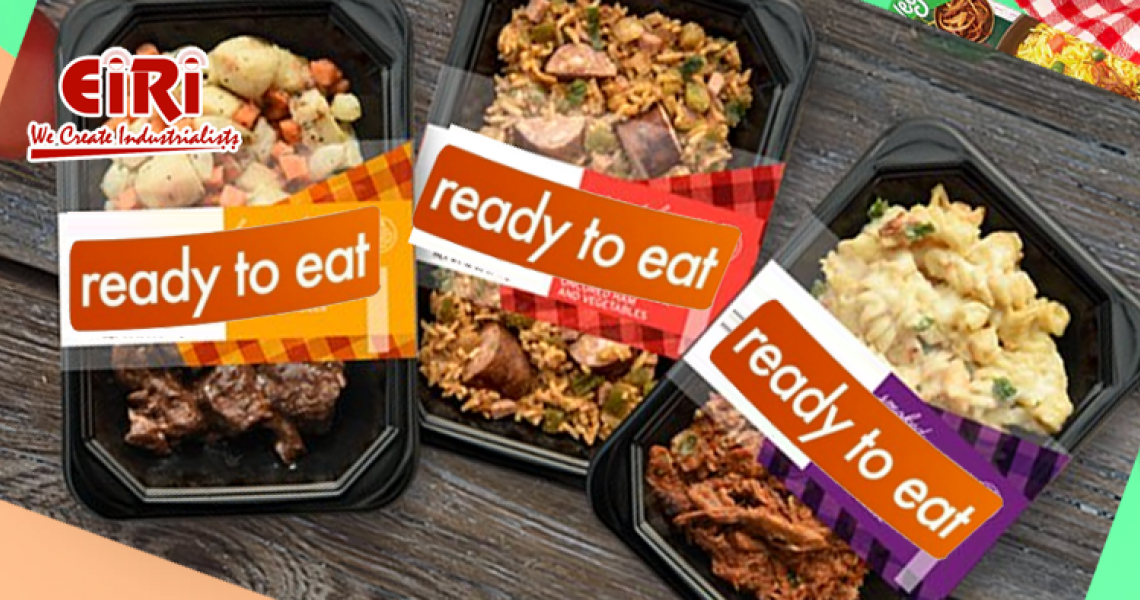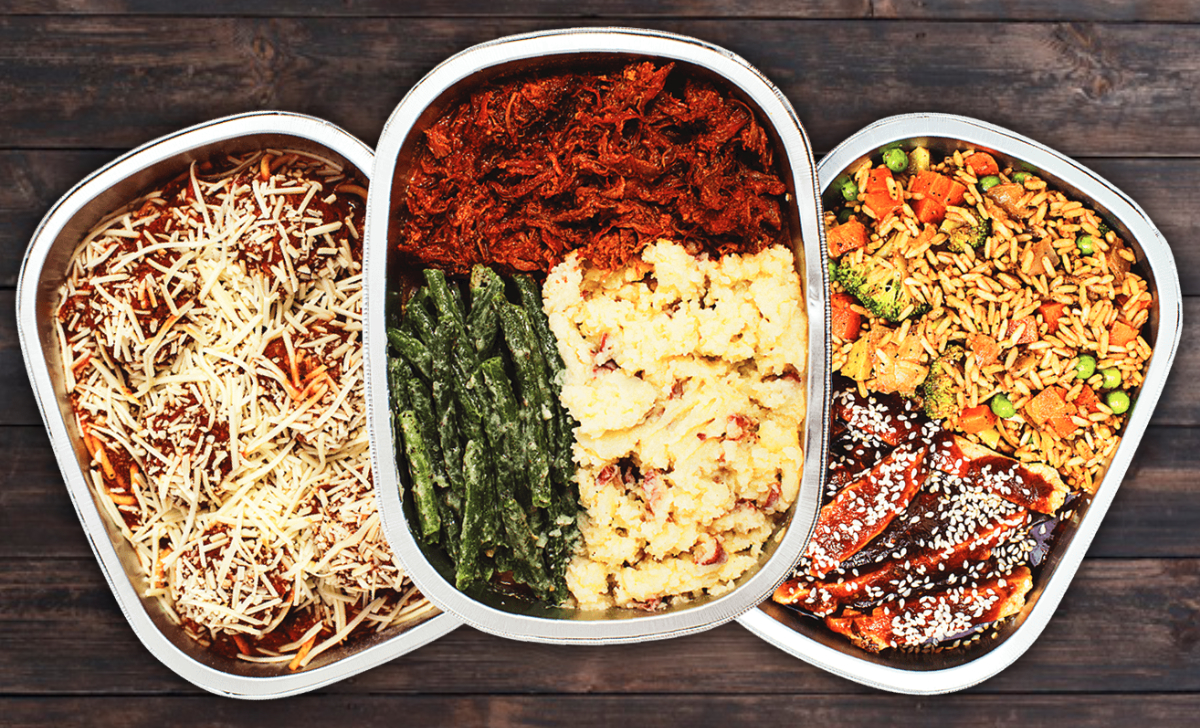The Ready-to-Eat Food Manufacturing Industry: Trends, Challenges, and Opportunities

The ready-to-eat (RTE) food manufacturing industry has experienced significant growth in recent years due to the increasing demand for convenient and time-saving food options. Ready-to-eat foods, also known as convenience foods or pre-packaged meals, refer to food products that are prepared, cooked, and packaged in a way that they can be consumed without further cooking or preparation by the consumer.
The RTE food industry caters to the needs of busy individuals, working professionals, students, and households seeking quick and easy meal solutions. These pre-packaged meals are available in various forms, including frozen meals, canned foods, shelf-stable products, and on-the-go snacks.
The primary objective of the ready-to-eat food manufacturing industry is to provide consumers with safe, convenient, and high-quality food products that offer both nutritional value and taste. The production process involves several stages, including ingredient sourcing, food preparation, cooking, packaging, and distribution.
Ready-to-eat foods have gained popularity for their convenience, time-saving benefits, and extended shelf life. They are commonly found in supermarkets, grocery stores, convenience stores, and online platforms. The RTE food industry has witnessed remarkable innovation in product development, packaging technology, and flavors to cater to diverse consumer preferences and dietary requirements.
Trends Shaping the Ready-to-Eat Food Manufacturing Sector
The ready-to-eat (RTE) food manufacturing sector is constantly evolving to meet the changing needs and preferences of consumers. As people seek convenient and time-saving meal solutions, several key trends are shaping the industry. Let's explore some of the prominent trends that are influencing the ready-to-eat food manufacturing sector:
Rising Demand for Healthy and Nutritious Options:
With growing health consciousness among consumers, there is an increasing demand for ready-to-eat foods that offer both convenience and nutritional value. Consumers are seeking options that are low in fat, sugar, and sodium while being rich in essential nutrients. Manufacturers are responding to this trend by incorporating healthier ingredients, reducing additives, and offering organic or natural options.
Growing Popularity of Plant-Based and Vegan Products:
The rise of plant-based and vegan diets has led to a surge in demand for ready-to-eat options that cater to these dietary preferences. Consumers are looking for plant-based alternatives to traditional meat and dairy products. As a result, manufacturers are developing innovative plant-based and vegan ready-to-eat products using ingredients like soy, legumes, nuts, and grains.
Innovations in Packaging Technology:
Packaging plays a crucial role in ensuring the quality, freshness, and extended shelf life of ready-to-eat foods. Manufacturers are adopting advanced packaging technologies such as modified atmosphere packaging (MAP), vacuum packaging, and barrier films to preserve the flavor, texture, and nutritional value of the products. Additionally, convenient packaging formats like single-serve portions and resealable packs are gaining popularity among consumers.
Increasing Focus on Sustainable Practices:
Sustainability is becoming a significant consideration in the ready-to-eat food manufacturing sector. Consumers are increasingly conscious of the environmental impact of their food choices. Manufacturers are incorporating sustainable practices into their manufacturing processes, including sourcing ingredients from sustainable suppliers, reducing food waste, and using eco-friendly packaging materials. This shift towards sustainability aligns with the growing demand for ethically produced and environmentally friendly products.
Expansion of Product Offerings for Dietary Preferences:
As consumers adopt various dietary preferences and restrictions, manufacturers are expanding their product offerings to cater to these needs. This includes gluten-free, keto-friendly, allergen-free, and other specialized options. By offering a wide range of ready-to-eat products that align with different dietary preferences, manufacturers can tap into new market segments and meet the diverse needs of consumers.

The aforementioned trends are driving innovation and growth in the ready-to-eat food manufacturing sector. Manufacturers that can anticipate and respond to these trends have the opportunity to gain a competitive edge and capture a larger market share. By focusing on health and nutrition, embracing plant-based options, adopting sustainable practices, leveraging packaging technology, and catering to specific dietary preferences, the industry can continue to meet the evolving demands of consumers.
Market Analysis: The Growing Demand for Ready-to-Eat Food Products
The ready-to-eat food manufacturing sector is undergoing significant transformations driven by consumer preferences and market trends. As the demand for convenient and nutritious meal solutions continues to rise, manufacturers must stay ahead of the curve by incorporating these trends into their product development, manufacturing processes, and marketing strategies. By embracing these trends, the industry can adapt to changing consumer needs and continue to thrive in the dynamic food market landscape.
The ready-to-eat (RTE) food industry has experienced significant growth in recent years, driven by changing consumer lifestyles and preferences. As more individuals seek convenient meal options that fit their busy schedules, the demand for ready-to-eat food products continues to rise. Let's delve into the market analysis to understand the factors driving this growth and explore the projections for the future.
Changing Consumer Preferences:
Convenience is a key factor influencing consumer choices in the food industry. Today's consumers are increasingly time-conscious and seek quick and hassle-free meal solutions. Ready-to-eat food products offer the convenience of pre-prepared meals that can be enjoyed immediately, eliminating the need for meal preparation and cooking time. This shift in consumer preferences has led to a surge in demand for RTE food products.
Busy Lifestyles and On-the-Go Consumption:
The fast-paced modern lifestyle, coupled with increased work demands and time constraints, has contributed to the growing popularity of ready-to-eat food products. Individuals are seeking easily accessible, portable, and ready-to-consume meals that can be enjoyed while on the go. RTE food products cater to this need by providing convenient, quick, and easily transportable options.
Diverse Product Offerings:
The RTE food industry offers a wide range of product options to cater to diverse consumer preferences. From microwaveable meals, pre-packaged salads, sandwiches, and snacks to frozen entrees and desserts, there is a ready-to-eat option available for various meal occasions. Manufacturers are continuously innovating and expanding their product portfolios to meet the evolving tastes and preferences of consumers.
Market Growth Projections:
The RTE food market has witnessed steady growth and is projected to continue expanding in the coming years. Factors such as urbanization, a rise in dual-income households, and increasing disposable incomes contribute to the market's growth. According to market research, the global RTE food market is expected to experience a compound annual growth rate (CAGR) of 5.4% from 2022 to 2028.
Consumer Demand for Healthier Options:
While convenience is a significant driver, consumers are also becoming more health-conscious and seeking healthier food choices. They are looking for ready-to-eat options that are nutritious, made with quality ingredients, and free from artificial additives. As a result, there is a growing demand for RTE food products that offer health benefits, including organic, gluten-free, low-sodium, and allergen-free options.
Market Trends and Innovation:
The RTE food industry is characterized by ongoing trends and innovations. Manufacturers are incorporating clean-label ingredients, reducing preservatives, and focusing on natural and organic offerings. Additionally, there is an increasing emphasis on sustainable packaging solutions to reduce environmental impact. The industry is also witnessing advancements in product development and packaging technology to enhance the quality, taste, and freshness of RTE food products.

The ready-to-eat food industry is experiencing substantial growth, driven by consumer demands for convenience, on-the-go consumption, and diverse product options. As the market continues to expand, there are opportunities for manufacturers to tap into the growing demand by offering a wide range of innovative, healthy, and sustainable RTE food products. By staying abreast of consumer trends, investing in research and development, and focusing on quality and nutrition, businesses can capitalize on the rising market potential and establish a strong presence in the ready-to-eat food sector.
Challenges and Opportunities by Ready-to-Eat Food Manufacturers
The ready-to-eat (RTE) food industry offers numerous opportunities for entrepreneurs looking to enter the market. However, like any business sector, it also presents certain challenges that need to be navigated. Let's explore some of the key challenges faced by RTE food manufacturers and the opportunities that exist for new industry players.
Quality Control and Food Safety:
Maintaining consistent quality and ensuring food safety are critical challenges in the RTE food industry. With perishable ingredients and complex processing methods, manufacturers must implement rigorous quality control measures at every stage of production. Adhering to stringent food safety regulations, investing in proper storage and transportation facilities, and implementing robust quality assurance systems are crucial for building consumer trust and maintaining a competitive edge.
Opportunity: By prioritizing quality control and food safety practices, new RTE food manufacturers can establish a reputation for delivering safe and reliable products. Emphasizing transparency in sourcing ingredients, adopting traceability systems, and obtaining necessary certifications can help differentiate their brand in the market.
Shelf Life and Preservation:
Extending the shelf life of RTE food products without compromising taste, texture, and nutritional value is a constant challenge. Manufacturers must employ suitable preservation techniques and packaging technologies to ensure product freshness and prevent spoilage. Developing innovative methods for preserving the sensory attributes and nutritional content of RTE foods is essential for meeting consumer expectations.
Opportunity: Investing in research and development to enhance preservation techniques and packaging solutions can provide a competitive advantage. New industry players can explore alternative preservation methods, such as modified atmosphere packaging or natural preservatives, to extend the shelf life of their products and cater to the evolving needs of health-conscious consumers.
Product Differentiation and Market Competition:
The RTE food industry is highly competitive, with numerous established players and a wide range of product offerings. Standing out in the market and differentiating from competitors can be a significant challenge. Developing unique product formulations, flavors, and packaging designs that resonate with target consumers is crucial for capturing market share.
Opportunity: New RTE food manufacturers can focus on niche markets or specific consumer segments that are underserved or have unique preferences. By offering specialized product lines, such as organic, gluten-free, or region-specific options, they can carve out a distinct market position and attract a loyal customer base.
Supply Chain Management:
Managing a complex supply chain is another challenge faced by RTE food manufacturers. Ensuring a steady and reliable supply of high-quality ingredients, managing inventory, and maintaining efficient logistics operations are crucial for uninterrupted production and timely delivery. Additionally, managing relationships with suppliers and addressing any supply chain disruptions is essential to mitigate risks.
Opportunity: New industry players can explore partnerships with local farmers, cooperatives, or sustainable ingredient suppliers to secure a consistent supply of high-quality ingredients. Implementing advanced supply chain management systems and leveraging technology for inventory tracking and logistics optimization can enhance operational efficiency and reduce costs.
Consumer Preferences and Changing Trends:
Understanding and adapting to evolving consumer preferences and trends is a constant challenge in the RTE food industry. Consumers are increasingly seeking healthier, natural, and sustainable food options. Keeping up with changing dietary trends, such as plant-based, low-sugar, or allergen-free products, requires continuous market research and product innovation.
Opportunity: New RTE food manufacturers can capitalize on emerging consumer trends by developing products that align with health-conscious and eco-friendly preferences. Conducting market research to identify gaps in the market and consumer needs can help drive product development and positioning strategies.
While the RTE food industry presents challenges, it also offers ample opportunities for new players. By addressing challenges related to quality control, shelf life, differentiation, supply chain management, and understanding consumer preferences, entrepreneurs can position themselves for success. Navigating these challenges with innovative approaches, embracing sustainability practices, and staying responsive to market trends can help new industry players establish a strong foothold and capitalize on the growing demand for convenient and ready-to-eat food products.
Conclusion
The ready-to-eat food manufacturing industry plays a crucial role in meeting the demands of modern consumers for convenient, time-saving, and flavorful meal options. With evolving consumer preferences and market trends, manufacturers have the opportunity to innovate, address challenges, and capitalize on the growing market for ready-to-eat foods. By focusing on product quality, food safety, and catering to changing consumer needs, the RTE food industry can continue to thrive and provide convenient meal solutions for individuals and households worldwide.










